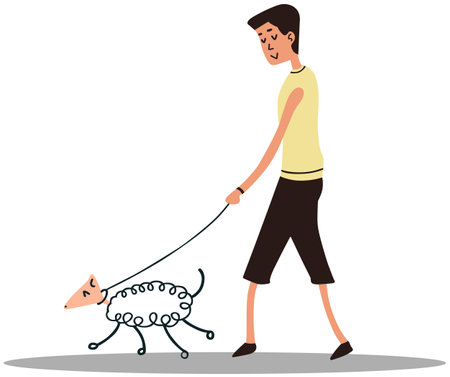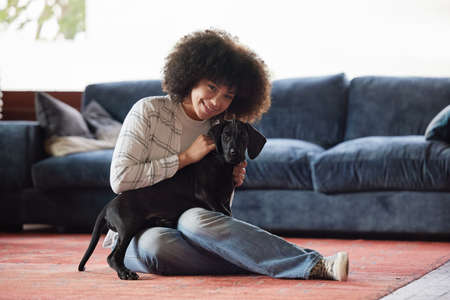1. Understanding Your Exotic Pet’s Needs
Choosing the right enclosure starts with understanding your exotic pets unique needs. Every species has different requirements for space, temperature, humidity, and enrichment. Providing the right environment is essential for their health and happiness.
Space Requirements
The size of your pet’s enclosure should allow them to move freely, exercise, and express natural behaviors. Below is a general guideline for space requirements based on common exotic pets:
| Exotic Pet | Minimum Enclosure Size |
|---|---|
| Bearded Dragon | 40-75 gallon tank |
| Burmese Python | 6-8 feet enclosure |
| Sugar Glider | 24x24x36 inches cage |
| Tarantula | 10-20 gallon tank |
Temperature and Humidity Control
Your exotic pet may require specific temperature and humidity levels to thrive. Reptiles, amphibians, and some tropical mammals need controlled environments. Investing in thermostats, heat lamps, or misting systems can help maintain optimal conditions.
Examples of Ideal Conditions:
- Bearded Dragons: Basking area around 95-110°F, cool side at 75-85°F.
- Burmese Pythons: Ambient temperature of 80-85°F with a basking spot at 90°F.
- Sugar Gliders: Room temperature between 75-80°F.
- Tarantulas: Depending on species, usually between 70-85°F.
Enrichment and Natural Behavior Support
Your pets enclosure should allow them to engage in natural behaviors such as climbing, burrowing, or basking. Here are some key enrichment elements:
Lizards & Snakes
- Basking rocks or logs
- Caves or hides for security
- Larger enclosures for climbing species
Mammals (e.g., Sugar Gliders)
- Ladders, branches, and ropes for climbing
- Pouches or nests for sleeping
- Toys to prevent boredom
Arachnids & Amphibians
- Moss or substrate for burrowing species
- Cave-like hiding spots for nocturnal animals
- Misting systems for high-humidity pets
The more closely you replicate your pet’s natural habitat, the healthier and happier they will be. Before purchasing an enclosure, research your pet’s specific needs to ensure they have enough space, the right climate control, and proper enrichment.
2. Choosing the Right Size for Comfort and Growth
Selecting the right enclosure size is crucial to your exotic pet’s well-being. A properly sized habitat allows them to move freely, exercise, and grow without restrictions. When choosing an enclosure, consider your pet’s species, activity level, and future growth to ensure they have ample space.
Factors to Consider When Determining Enclosure Size
Every exotic pet has unique space requirements. Some animals are more active and need extra room to roam, while others may prefer cozy spaces. Below are key factors to keep in mind:
Species-Specific Needs
Different species have different space requirements. For example, reptiles like iguanas need tall enclosures for climbing, while tortoises require large floor space. Research your pet’s natural habitat and behaviors to determine the best dimensions.
Activity Level
An active pet will need more space than a sedentary one. If your pet enjoys climbing, running, or burrowing, ensure the enclosure is large enough to accommodate these activities.
Future Growth
Your pet may be small now, but many exotic pets grow significantly over time. Choose an enclosure that allows for their full adult size to prevent frequent upgrades.
Recommended Enclosure Sizes for Common Exotic Pets
| Pet Type | Minimum Enclosure Size |
|---|---|
| Bearded Dragon | 48″ L x 24″ W x 24″ H |
| Burmese Python | 72″ L x 36″ W x 24″ H |
| Crested Gecko | 18″ L x 18″ W x 24″ H |
| African Grey Parrot | 36″ L x 24″ W x 48″ H |
| Sugar Glider | 24″ L x 24″ W x 36″ H |
The Importance of Extra Space
If possible, always go bigger than the minimum recommended size. More space allows for better enrichment, reducing stress and promoting natural behaviors. Adding climbing structures, hiding spots, and interactive elements can make the enclosure more engaging.
Avoiding Overcrowding
If you plan to house multiple pets together, factor in additional space per animal. Overcrowding can lead to territorial disputes and increased stress levels.
A Good Rule of Thumb
Aim for at least twice the length of your pet’s body, plus extra height if they climb or jump frequently. This ensures they have enough room to move comfortably.

3. Selecting the Best Materials for Safety and Durability
Choosing the right materials for your exotic pet’s enclosure is essential for their safety, comfort, and overall well-being. The material you select should provide proper ventilation, insulation, and be easy to clean. Let’s explore some common enclosure materials and their benefits.
Common Enclosure Materials and Their Features
Different materials offer unique advantages and drawbacks. Consider your pet’s needs when making a decision.
| Material | Pros | Cons |
|---|---|---|
| Glass | – Excellent visibility – Retains heat well – Easy to clean |
– Can be heavy and fragile – Poor ventilation if not properly designed |
| Wire Mesh | – Great airflow – Lightweight and durable – Allows for climbing opportunities |
– May not retain heat well – Some pets can injure themselves on rough edges |
| PVC or Plastic | – Lightweight and durable – Resistant to moisture and mold – Easy to clean |
– May not provide enough ventilation without modifications – Can warp under extreme temperatures |
| Wood | – Natural appearance – Provides insulation – Customizable designs |
– Absorbs moisture, leading to mold or rot – Harder to clean compared to other materials |
| Acrylic | – Lightweight compared to glass – Provides good visibility – Durable and shatter-resistant |
– Scratches easily over time – Can be more expensive than other options |
The Importance of Ventilation and Insulation
Your exotic pet’s health depends on proper airflow and temperature regulation. A well-ventilated enclosure prevents moisture buildup, reducing the risk of mold and respiratory issues. At the same time, insulation helps maintain a stable temperature, crucial for reptiles and other temperature-sensitive animals.
How to Ensure Proper Ventilation:
- If using glass or acrylic, include mesh panels or vents for airflow.
- Avoid fully enclosed plastic setups unless they have built-in ventilation.
- Select wire mesh enclosures for animals that require high air circulation.
Tips for Effective Insulation:
- Add insulating materials like foam boards if needed, especially in colder climates.
- Avoid placing enclosures near direct sunlight or drafty areas to prevent temperature fluctuations.
- If using wood, seal it properly to prevent moisture damage while maintaining insulation properties.
Simplifying Maintenance with Easy-to-Clean Materials
An enclosure that’s easy to clean will help maintain hygiene and reduce the risk of bacterial growth. Smooth surfaces like glass, acrylic, or PVC are ideal because they don’t absorb moisture or odors. If you choose wood, ensure it is sealed with pet-safe coatings to prevent staining and odor retention.
Cleaning Tips:
- Avoid porous materials that trap bacteria and are difficult to sanitize.
- Select removable trays or panels for quick cleaning access.
- If using wire mesh, ensure no small crevices where waste can accumulate.
- PVC-lined enclosures are an excellent choice for moisture resistance and easy wipe-downs.
Selecting the Right Material for Your Pet’s Needs
The best material will depend on your pet’s specific requirements. For reptiles needing high humidity, glass or PVC may be best. Small mammals might benefit from wire mesh enclosures with solid flooring. Always prioritize safety, durability, and ease of maintenance when making your choice.
4. Designing an Enclosure That Mimics Natural Habitat
Creating a comfortable and naturalistic habitat for your exotic pet is essential for their health and well-being. A well-designed enclosure should closely resemble their native environment, providing them with the necessary elements to thrive. Key components to consider include substrates, hiding spots, and temperature control.
Choosing the Right Substrate
The substrate serves as the foundation of your pet’s habitat and should match their natural terrain. The right choice will help maintain proper humidity levels, provide comfort, and support natural behaviors.
| Pet Type | Recommended Substrate |
|---|---|
| Desert Reptiles (e.g., Bearded Dragons) | Sand, reptile carpet, or tile |
| Tropical Reptiles (e.g., Ball Pythons) | Coconut fiber, cypress mulch, or sphagnum moss |
| Amphibians (e.g., Frogs) | Damp soil, moss, or bark chips |
| Small Mammals (e.g., Hedgehogs) | Pine or aspen shavings (avoid cedar) |
Providing Hiding Spots and Climbing Structures
Your pet needs places to hide and explore to feel secure. Hiding spots reduce stress and mimic natural shelters found in the wild.
- Caves and Logs: Ideal for reptiles and small mammals that need secluded spaces.
- Bark and Leaves: Great for amphibians that burrow or hide under cover.
- Branches and Vines: Essential for arboreal species like chameleons and tree frogs.
- Tunnels: Perfect for burrowing animals such as hedgehogs or hamsters.
Maintaining Proper Temperature and Humidity
A stable climate inside the enclosure is crucial for your pet’s health. Different species require different temperature ranges and humidity levels.
| Pet Type | Temperature Range | Humidity Level | Additions Needed |
|---|---|---|---|
| Tropical Reptiles (e.g., Iguanas) | 75-85°F (24-29°C) | 60-80% | Misting system, heat lamps |
| Desert Reptiles (e.g., Leopard Geckos) | 75-90°F (24-32°C) | <40% | Basking spot, heat mat |
| Amphibians (e.g., Dart Frogs) | 70-80°F (21-27°C) | >80% | Moss, water dish, fogger |
| Mammals (e.g., Sugar Gliders) | 70-90°F (21-32°C) | Around 50% | Nest box, fleece bedding |
Selecting Proper Lighting and Ventilation
Your exotic pet’s enclosure should have appropriate lighting that matches their day-night cycle. UVB lighting is essential for many reptiles to synthesize vitamin D3. Proper ventilation prevents mold growth while maintaining humidity balance.
- UVB Lights: Necessary for reptiles like turtles and iguanas.
- Ceramic Heat Emitters: Provide warmth without disrupting sleep cycles.
- Misting Systems: Help maintain high humidity for amphibians.
- Adequate Airflow: Ensures fresh air circulation without excessive dryness.
A well-planned enclosure enhances your pet’s quality of life by replicating their natural surroundings. By incorporating the right substrate, hiding areas, temperature regulation, lighting, and ventilation, you can create a space where they feel safe and comfortable.
5. Ensuring Security and Accessibility
When choosing the perfect enclosure for your exotic pet, security and accessibility are two key factors that should never be overlooked. A well-designed enclosure ensures your pets safety while making it easy for you to interact with them and perform regular maintenance.
Secure Locks and Escape Prevention
Exotic pets can be surprisingly clever escape artists. Whether you have a reptile, bird, or small mammal, it’s important to invest in secure locks and escape-proof designs. Here are some essential security features to consider:
| Security Feature | Description |
|---|---|
| Locking Mechanisms | Use strong latches or keyed locks to prevent accidental openings. |
| Tight-Fitting Doors | Ensure doors close securely without gaps where pets can squeeze through. |
| Durable Materials | Avoid flimsy materials that pets can chew or break through. |
| Proper Ventilation Without Openings | Select enclosures with well-placed ventilation holes that don’t allow escapes. |
Easy Access for Maintenance and Interaction
An ideal enclosure should allow you to clean, feed, and interact with your pet without difficulty. Consider the following when evaluating accessibility:
- Larger Entry Points: Ensure doors or removable panels are big enough for cleaning tools and safe handling of your pet.
- Smooth Sliding or Hinged Doors: Choose doors that operate smoothly and securely lock into place.
- Easily Removable Components: Some enclosures feature detachable tops or side panels for easier access during deep cleaning.
- Sufficient Space for Handling: If your pet requires frequent interaction, make sure there’s enough room for safe handling inside the enclosure.
Avoid Common Accessibility Issues
Poorly designed enclosures can make daily care frustrating. Here are some common problems to avoid:
- Narrow Openings: Small doors can make it difficult to reach all areas for cleaning.
- Difficult Locking Systems: Complicated locks may be inconvenient for owners while still being ineffective against escapes.
- Lack of Removable Sections: Enclosures without removable parts may require complete disassembly for deep cleaning.
The Balance Between Security and Convenience
Your exotic pets enclosure should strike a balance between keeping them secure and allowing easy access for you. Prioritizing strong materials, reliable locks, and well-placed openings will ensure both safety and convenience in maintaining your pet’s home.


